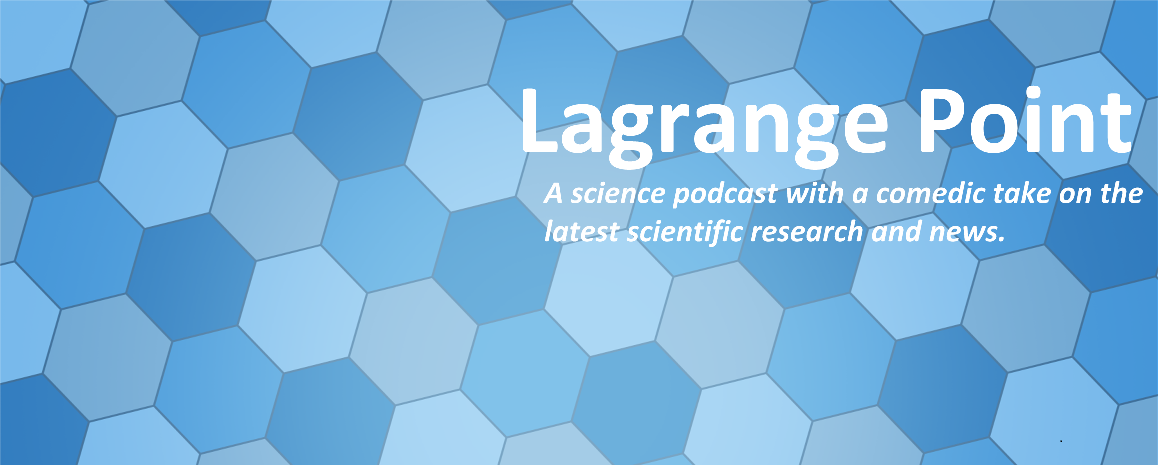Episodes
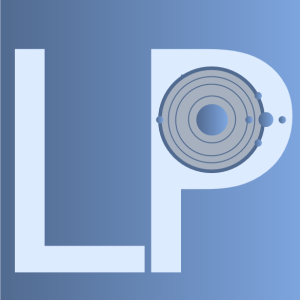
Monday Sep 30, 2019
Monday Sep 30, 2019
Washing machines can save a lot of time and help clean up mess, but they can also harm our health and environment. Which washing process is better for the environment - full an fast or empty and delicate? How do washing machines help fill our oceans with microplastics? What can be done to help stop washing machines contributing to the microplastics in our waterways? Which washing setting is best for your health? Cold and clean or warm and soapy? How did a normal washing machine cause havoc in a hospital? How can you multi-drug resistant pathogens spread through a washing machine?
References:
- American Society for Microbiology. (2019, September 27). Your energy-efficient washing machine could be harboring pathogens: Lower temperatures used in 'energy saver' washing machines may not be killing all pathogens. ScienceDaily. Retrieved September 29, 2019 from www.sciencedaily.com/releases/2019/09/190927135202.htm
- Max R. Kelly, Neil J. Lant, Martyn Kurr, J. Grant Burgess. Importance of Water-Volume on the Release of Microplastic Fibers from Laundry. Environmental Science & Technology, 2019; DOI: 10.1021/acs.est.9b03022
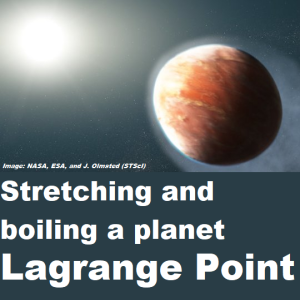
Monday Aug 05, 2019
Episode 338 - Exoplanets boiling and stretching, Goldilocks and Supernova
Monday Aug 05, 2019
Monday Aug 05, 2019
Boiling planets being stretched and squished. Tiny white dwarf stars going supernova. Goldilocks planets potentially with liquid water. Exoplanet hunting is now a lot easier with missions like TESS and veterans like Hubble. We look at some special cases, and how searching for 1 planet can uncover loads more. Sometimes planets are lurking in old observatory data, we just need to know where to look. Too hot, too cold, GJ357 potentially has a planet that's just right with liquid water. What causes a White Dwarf to go supernova? It needs more than itself to kickstart it into a Type 1a nova...so where does the extra boost come from? Devouring another planet? Or another star?
References:
- L. Kaltenegger, J. Madden, Z. Lin, S. Rugheimer, A. Segura, R. Luque, E. Palle, N. Espinoza. The Habitability of GJ 357 d Possible Climates and Observability. Astrophysical Journal Letters, 2019; (accepted) [link]
- R. Luque, E. Pallé, D. Kossakowski, S. Dreizler, J. Kemmer, N. Espinoza. Planetary system around the nearby M dwarf GJ 357 including a transiting, hot, Earth-sized planet optimal for atmospheric characterization. Astronomy & Astrophysics, 2019; DOI: 10.1051/0004-6361/201935801
- David K. Sing, Panayotis Lavvas, Gilda E. Ballester, Alain Lecavelier des Etangs, Mark S. Marley, Nikolay Nikolov, Lotfi Ben-Jaffel, Vincent Bourrier, Lars A. Buchhave, Drake L. Deming, David Ehrenreich, Thomas Mikal-Evans, Tiffany Kataria, Nikole K. Lewis, Mercedes López-Morales, Antonio García Muñoz, Gregory W. Henry, Jorge Sanz-Forcada, Jessica J. Spake, Hannah R. Wakeford. The Hubble Space Telescope PanCET Program: Exospheric Mg ii and Fe ii in the Near-ultraviolet Transmission Spectrum of WASP-121b Using Jitter Decorrelation. The Astronomical Journal, 2019; 158 (2): 91 DOI: 10.3847/1538-3881/ab2986
- P J Vallely, M Fausnaugh, S W Jha, M A Tucker, Y Eweis, B J Shappee, C S Kochanek, K Z Stanek, Ping Chen, Subo Dong, J L Prieto, T Sukhbold, Todd A Thompson, J Brimacombe, M D Stritzinger, T W-S Holoien, D A H Buckley, M Gromadzki, Subhash Bose. ASASSN-18tb: a most unusual Type Ia supernova observed by TESS and SALT. Monthly Notices of the Royal Astronomical Society, 2019; 487 (2): 2372 DOI: 10.1093/mnras/stz1445
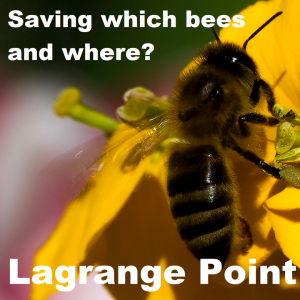
Monday Jun 24, 2019
Episode 332 - Affordable, smart and helpful prosthetics
Monday Jun 24, 2019
Monday Jun 24, 2019
Getting a prosthetic limb to feel natural and comfortable without spending a fortune is incredibly difficult. Plus the human body (and prosthetics) change over time. So how can you make a prosthetic better match it's user? We look at three stories of adaptive prosthetics and finding ways to make use of new technology to help improve lives. From building an elaborate treadmill contraption to hearing through your fingers.
When you stumble your brain goes into overdrive to keep you standing, but what exactly does it do?
Affordable and comfortably fitting prosthetic limbs are especially important for children who grow out of them quickly. How can we make them more responsive?
Hearing words clearly in a noisy environment is especially hard on those with hearing aids. But can your fingers help out?
Vanderbilt University researchers built an elaborate treadmill to trip people, with the goal of helping advance prosthetic research.
Using 3D scanning, printing and embedded sensors, researchers are making prosthetic better matched to their users.
People often say look with your eyes not your fingers, but can you use your fingers to hear as well?
Embedding sensors into 3D printed prosthetics can help adapt the design to better suit the actual wear and tear from the body.
Using an elaborate tripping contraption on a treadmill, Vanderbilt university researchers hope to stop prosthetic leg users falling over.
- Yuxin Tong, Ezgi Kucukdeger, Justin Halper, Ellen Cesewski, Elena Karakozoff, Alexander P. Haring, David McIlvain, Manjot Singh, Nikita Khandelwal, Alex Meholic, Sahil Laheri, Akshay Sharma, Blake N. Johnson. Low-cost sensor-integrated 3D-printed personalized prosthetic hands for children with amniotic band syndrome: A case study in sensing pressure distribution on an anatomical human-machine interface (AHMI) using 3D-printed conformal electrode arrays. PLOS ONE, 2019; 14 (3): e0214120 DOI: 10.1371/journal.pone.0214120
- Shane T. King, Maura E. Eveld, Andrés Martínez, Karl E. Zelik, Michael Goldfarb. A novel system for introducing precisely-controlled, unanticipated gait perturbations for the study of stumble recovery. Journal of NeuroEngineering and Rehabilitation, 2019; 16 (1) DOI: 10.1186/s12984-019-0527-7
- Katarzyna Cieśla, Tomasz Wolak, Artur Lorens, Benedetta Heimler, Henryk Skarżyński, Amir Amedi. Immediate improvement of speech-in-noise perception through multisensory stimulation via an auditory to tactile sensory substitution. Restorative Neurology and Neuroscience, 2019; 37 (2): 155 DOI: 10.3233/RNN-190898
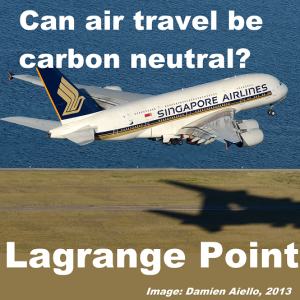
Monday Jun 17, 2019
Episode 331 - Making modern technology less energy intensive
Monday Jun 17, 2019
Monday Jun 17, 2019
Our modern world relies on energy, and some of it produce a lot of carbon dioxide. How can we make everything from air travel to wearable tech be less carbon intensive? Is there a way to make jet fuel or power ships that is carbon neutral? Just how much energy do crypto currency burn up? What is the impact of all this Bitcoin speculation on the health of the planet? From Fitbits to smart watches and Pokemon Go, wearable tech is a big trend, but how can we make these devices power themselves. There is a lot of excess energy when we walk and move, so can we use this to power our technology?
References:
- ETH Zurich. (2019, June 13). Carbon-neutral fuel made from sunlight and air. ScienceDaily. Retrieved June 15, 2019 from www.sciencedaily.com/releases/2019/06/190613103146.htm
- Christian Stoll, Lena Klaaßen, Ulrich Gallersdörfer. The Carbon Footprint of Bitcoin. Joule, 2019; DOI: 10.1016/j.joule.2019.05.012
- Michael G. Stanford, John T. Li, Yieu Chyan, Zhe Wang, Winston Wang, James M. Tour. Laser-Induced Graphene Triboelectric Nanogenerators. ACS Nano, 2019; DOI: 10.1021/acsnano.9b02596
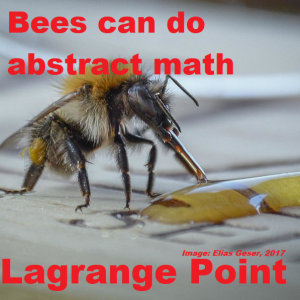
Monday May 27, 2019
Episode 328 - Mathematics and Nature, from Bees to Choruses of Frogs
Monday May 27, 2019
Monday May 27, 2019
Mathematics is not just something humans can perform. It's present across the universe and especially in nature. So can animals understand abstract mathematical concepts? Can we learn from the different complicated algorithms and mathematical models used by animals to improve the internet of things? What can social media help tell us about both human and animal tourists to nature reserves?
References:
- Scarlett R. Howard, Aurore Avarguès-Weber, Jair E. Garcia, Andrew D. Greentree, Adrian G. Dyer. Numerical cognition in honeybees enables addition and subtraction. Science Advances, 2019; 5 (2): eaav0961 DOI: 10.1126/sciadv.aav0961
- Ikkyu Aihara , Daichi Kominami , Yasuharu Hirano and Masayuki Murata. Mathematical modelling and application of frog choruses as an autonomous distributed communication system. Royal Society Open Science, 2019 DOI: 10.1098/rsos.181117
- Anna Hausmann, Tuuli Toivonen, Christoph Fink, Vuokko Heikinheimo, Henrikki Tenkanen, Stuart H.M. Butchart, Thomas M. Brooks, Enrico Di Minin. Assessing global popularity and threats to Important Bird and Biodiversity Areas using social media data. Science of The Total Environment, 2019; DOI: 10.1016/j.scitotenv.2019.05.268
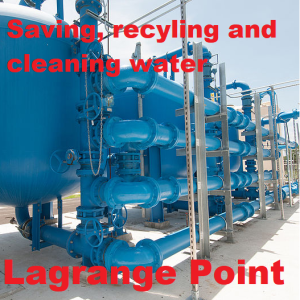
Monday May 13, 2019
Episode 326 - Capturing, reusing, recycling and cleaning water.
Monday May 13, 2019
Monday May 13, 2019
Water is essential for life, but we need to take care of the complete water cycle. Treating waste water can help remove harmful pollutants from cosmetics and medication. Industrial processes and landfill can also make super salty water, that we need to clean before releasing. Without good water management then we can end up without water in times of drought, and in times of flood more water than we can handle. This week we find out about ways to better manage the most precious of resources, water.
References:
- Qian Yang, Bridget R Scanlon. How much water can be captured from flood flows to store in depleted aquifers for mitigating floods and droughts? A case study from Texas, US. Environmental Research Letters, 2019; 14 (5): 054011 DOI: 10.1088/1748-9326/ab148e
- Rui Zhao, Tingting Ma, Shuying Li, Yuyang Tian, Guangshan Zhu. Porous Aromatic Framework Modified Electrospun Fiber Membrane as a Highly Efficient and Reusable Adsorbent for Pharmaceuticals and Personal Care Products Removal. ACS Applied Materials & Interfaces, 2019; 11 (18): 16662 DOI: 10.1021/acsami.9b04326
- Chanhee Boo, Robert K. Winton, Kelly M. Conway, Ngai Yin Yip. Membrane-less and Non-evaporative Desalination of Hypersaline Brines by Temperature Swing Solvent Extraction. Environmental Science & Technology Letters, 2019; DOI: 10.1021/acs.estlett.9b00182
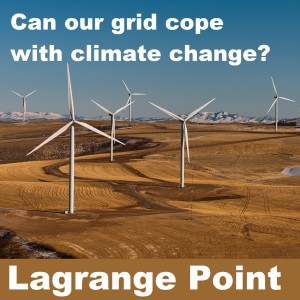
Monday Mar 11, 2019
Monday Mar 11, 2019
One of the futuristic technologies always touted is Hydrogen fuel cells. So why are they not everywhere? we look at the challenges in production,storage, and use of hydrogen from cars to factories. Plus we examine if our electricity grid will be able to cope with the drastic weather condition changes from climate change in the year 2100.
References:
- Yinjun Xie, Peng Hu, Yehoshoa Ben-David, David Milstein. A Reversible Liquid Organic Hydrogen Carrier System Based on Methanol-Ethylenediamine and Ethylene Urea. Angewandte Chemie International Edition, 2019; DOI: 10.1002/anie.201901695
- Gunther Glenk, Stefan Reichelstein. Economics of converting renewable power to hydrogen. Nature Energy, 2019; DOI: 10.1038/s41560-019-0326-1
- Smail Kozarcanin, Hailiang Liu, Gorm Bruun Andresen. 21st Century Climate Change Impacts on Key Properties of a Large-Scale Renewable-Based Electricity System. Joule, 2019; DOI: 10.1016/j.joule.2019.02.001
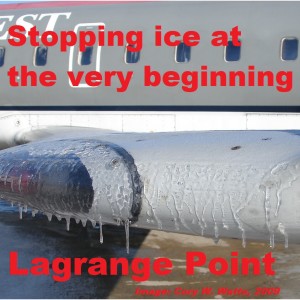
Monday Feb 04, 2019
Monday Feb 04, 2019
Water is essential for life, but if its too cold it can cause havoc on infrastructure. If it's too hot there is not enough to go around. If it's too salty its not good for organic material, and if its saturated with CO2 its even more dangerous. So how do we keep water working for us as our climate changes and we have more droughts, more polar vortexes and more power plants? This week we find out about advances in chemistry and materials science that can help make better use of water.
References:
- Peyman Irajizad, Abdullah Al-Bayati, Bahareh Eslami, Taha Shafquat, Masoumeh Nazari, Parham Jafari, Varun Kashyap, Ali Masoudi, Daniel Araya, Hadi Ghasemi. Stress-Localized Durable Icephobic Surfaces. Materials Horizons, 2019; DOI: 10.1039/C8MH01291A
- Peyman Irajizad, Abdullah Al-Bayati, Bahareh Eslami, Taha Shafquat, Masoumeh Nazari, Parham Jafari, Varun Kashyap, Ali Masoudi, Daniel Araya, Hadi Ghasemi. Stress-Localized Durable Icephobic Surfaces. Materials Horizons, 2019; DOI: 10.1039/C8MH01291A
- Neil Williams et al. CO2 Capture via Crystalline Hydrogen-Bonded Bicarbonate Dimers. Chem, 2019 DOI: 10.1016/j.chempr.2018.12.025
- Image: Cory W Watts, 2009
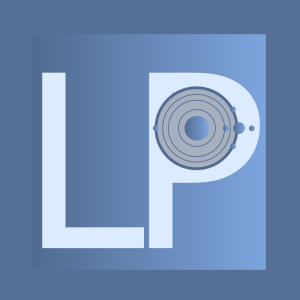
Monday Jan 14, 2019
Episode 309 - Mysterious signals from outside our galaxy!
Monday Jan 14, 2019
Monday Jan 14, 2019
Space is filled with incredibly strange objects, from black holes to neutron stars. In the right conditions these strange stellar objects create incredibly powerful radio bursts which give radio astronomers a treasure trove of data. From the WOW! Signal to Pulsars we recap the history of strange space signals, and we look at the modern hunt for Fast Radio Bursts (FRBs) and how the CHIME observatory in Canada is shedding light on this mystery.
- CHIME FRB Collaboration. Observations of fast radio bursts at frequencies down to 400 megahertz. Nature, 2019 DOI: 10.1038/s41586-018-0867-7
- CHIME FRB Collaboration. A second source of repeating fast radio bursts. Nature, 2019 DOI: 10.1038/s41586-018-0864-x
- Mann, Adam (28 March 2017). "Core Concept: Unraveling the enigma of fast radio bursts". Proc Natl Acad Sci U S A. 114 (13): 3269–3271. Bibcode:2017PNAS..114.3269M. doi:10.1073/pnas.1703512114. PMC 5380068. PMID 28351957.
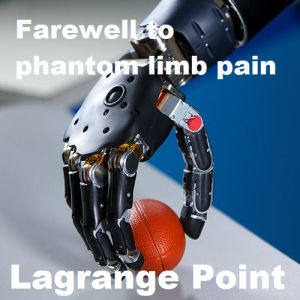
Monday Jan 07, 2019
Episode 308 - Farewell to phantom limb pain, and better prostheses
Monday Jan 07, 2019
Monday Jan 07, 2019
Having a traumatic injury, serious infection or cancer is bad enough let alone if you have to have an amputation. But once that amputation has occurred how do you make life easier for the amputee? Prostheses are helpful, but they can require retraining your brain and lack the sense of touch. Plus phantom limb pain can make life painful and frustrating. This week we find out about surgical and biomedical treatments to help improve prostheses and give amputees better quality of life.
References:
- Bowen, J. B., Ruter, D., Wee, C., West, J., & Valerio, I. L. (2019). Targeted Muscle Reinnervation Technique in Below-Knee Amputation. Plastic and Reconstructive Surgery, 143(1), 309-312. doi:10.1097/prs.0000000000005133
- Cheesborough, J., Smith, L., Kuiken, T., & Dumanian, G. (2015). Targeted Muscle Reinnervation and Advanced Prosthetic Arms. Seminars in Plastic Surgery, 29(01), 062-072. doi:10.1055/s-0035-1544166
- Nathanaël Jarrassé, Etienne de Montalivet, Florian Richer, Caroline Nicol, Amélie Touillet, Noël Martinet, Jean Paysant, Jozina B. de Graaf. Phantom-Mobility-Based Prosthesis Control in Transhumeral Amputees Without Surgical Reinnervation: A Preliminary Study. Frontiers in Bioengineering and Biotechnology, 2018; 6 DOI: 10.3389/fbioe.2018.00164
- Arizona State University. (2018, November 7). New prosthetic hand system allows user to 'feel' again: The Neural-Enabled Prosthetic Hand (NEPH) system marks first time bidirectional prosthesis can be used in home setting. ScienceDaily. Retrieved January 5, 2019 from www.sciencedaily.com/releases/2018/11/181107093757.htm

Monday Dec 17, 2018
Episode 305 - Reaching space, the darkside of the moon and wet asteroids
Monday Dec 17, 2018
Monday Dec 17, 2018
It's been a busy week in space news from Virgin Galactic finally reaching space, to wet asteroids and even a mystery in space. We find out about the latest missions to investigate surprisingly damp asteroids by JAXA and NASA. We recap the swirling controversy around a mysterious hole in the Soyuz spacecraft, plus the latest on Chang'e-4's journey to the dark side of the moon.
- Antczak, J. (n.d.). Virgin Galactic tourism rocket ship reaches space in test. Retrieved from https://phys.org/news/2018-12-virgin-galactic-rocket-ship-space.html
- Jones, A. (2018, December 12). Chang'e-4 spacecraft enters lunar orbit ahead of first-ever far side landing. Retrieved from https://spacenews.com/change-4-spacecraft-enters-lunar-orbit-ahead-of-first-ever-far-side-landing/
- Yamaguchi, M. (n.d.). Photos from Japan space rovers show rocky asteroid surface. Retrieved from https://phys.org/news/2018-12-photos-japan-space-rovers-rocky.html
- Materials provided by University of Arizona. Original written by Erin Morton/OSIRIS-REx and Daniel Stolte. Note: Content may be edited for style and length.
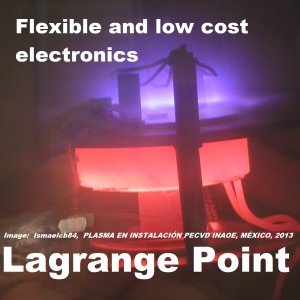
Monday Dec 10, 2018
Episode 304 - Flexible electronics, graphene transfer and paper sensors
Monday Dec 10, 2018
Monday Dec 10, 2018
Flexible electronics and phones sound like science fiction,but materials engineers are turning them into science fact. We find out about projects from across the world to make it a reality. From Australian flexible screens, to MIT's incredibly thin and exotic semiconductors to Purdue's paper based circuits for medical applications.
References:
- Linglong Zhang, Ankur Sharma, Yi Zhu, Yuhan Zhang, Bowen Wang, Miheng Dong, Hieu T. Nguyen, Zhu Wang, Bo Wen, Yujie Cao, Boqing Liu, Xueqian Sun, Jiong Yang, Ziyuan Li, Arara Kar, Yi Shi, Daniel Macdonald, Zongfu Yu, Xinran Wang, Yuerui Lu. Efficient and Layer-Dependent Exciton Pumping across Atomically Thin Organic-Inorganic Type-I Heterostructures. Advanced Materials, 2018; 30 (40): 1803986 DOI: 10.1002/adma.201803986
- Wei Kong, Huashan Li, Kuan Qiao, Yunjo Kim, Kyusang Lee, Yifan Nie, Doyoon Lee, Tom Osadchy, Richard J Molnar, D. Kurt Gaskill, Rachael L. Myers-Ward, Kevin M. Daniels, Yuewei Zhang, Suresh Sundram, Yang Yu, Sang-hoon Bae, Siddharth Rajan, Yang Shao-Horn, Kyeongjae Cho, Abdallah Ougazzaden, Jeffrey C. Grossman, Jeehwan Kim. Polarity governs atomic interaction through two-dimensional materials. Nature Materials, 2018; DOI: 10.1038/s41563-018-0176-4
- Behnam Sadri, Debkalpa Goswami, Marina Sala de Medeiros, Aniket Pal, Beatriz Castro, Shihuan Kuang, Ramses V. Martinez. Wearable and Implantable Epidermal Paper-Based Electronics. ACS Applied Materials & Interfaces, 2018; 10 (37): 31061 DOI: 10.1021/acsami.8b11020
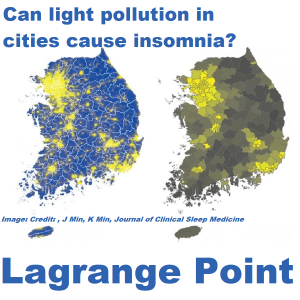
Monday Dec 03, 2018
Monday Dec 03, 2018
Life in the big city can be fully of late nights, lots of lights and risky behaviour. This week we look at what living in the big city may mean for your health. Whether it be the impact of light pollution and getting a good night's rest, to the trade-offs of being a night owl, our circadian rhythms can be impacted by living a 24/7 life. We find out about studies on big data about a cities health, from a long term study of insomniacs in South Korea to using social media to determine when a city is 'feeling lucky' and willing to take a risk.
References:
- Jin-young Min, Kyoung-bok Min. Outdoor Artificial Nighttime Light and Use of Hypnotic Medications in Older Adults: A Population-Based Cohort Study. Journal of Clinical Sleep Medicine, 2018; 14 (11): 1903 DOI: 10.5664/jcsm.7490
- Suzana Almoosawi Snieguole Vingeliene Frederic Gachon Trudy Voortman Luigi Palla Jonathan D Johnston Rob Martinus Van Dam Christian Darimont Leonidas G Karagounis. Chronotype: Implications for Epidemiologic Studies on Chrono-Nutrition and Cardiometabolic Health. Advances in Nutrition, 2018 DOI: 10.1093/advances/nmy070
- A. Ross Otto, Johannes C. Eichstaedt. Real-world unexpected outcomes predict city-level mood states and risk-taking behavior. PLOS ONE, 2018; 13 (11): e0206923 DOI: 10.1371/journal.pone.0206923
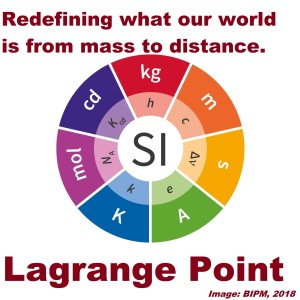
Monday Nov 05, 2018
Episode 299 - Redefining the kilogram a history of measurement
Monday Nov 05, 2018
Monday Nov 05, 2018
Have you ever stopped to wonder what ruler rules them all? How we set the standard for height, for weight, for everything around us? What if you weighed one thing one day, and travelled to another country and suddenly gained 5 kgs or had to use an entirely different weight system? What if you weighed one thing this week and more the next? This week we find out the history measurement systems, how we've standardised them and come up with unique and repeatable measures that don't rely on artefacts (real and metaphorically).
References:
- Suplee, C., Lauren Lee, J., Gillespie, A., Porter, G., Stein, B., & Phillips, B. et al. (2018). A Turning Point for Humanity: Redefining the World’s Measurement System. Retrieved from https://www.nist.gov/si-redefinition/turning-point-humanity-redefining-worlds-measurement-system
- Jabbour, Z., & Yaniv, S. (2001). The kilogram and measurements of mass and force. Journal of Research of the National Institute of Standards and Technology, 106(1), 25. doi:10.6028/jres.106.003
- Newell, D. B. (2014). A more fundamental International System of Units. Physics Today, 67(7), 35-41. doi:10.1063/pt.3.2448
- Bureau International des Poids et Mesures. (n.d.). On the future revision of the SI. Retrieved from https://www.bipm.org/en/measurement-units/rev-si/
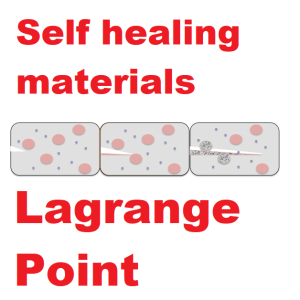
Monday Oct 29, 2018
Episode 298 - Self healing materials, scratch tests and the crockmeter
Monday Oct 29, 2018
Monday Oct 29, 2018
Self healing materials sound like science fiction, but how can we turn them into a reality? What does self healing even mean? We dive into the material science of self healing systems to find out what mechanism are used and how you can make a material heal. Plus we find out how you can make a self healing material out of common plastics using one of the weakest forces. Plus how scientists test and assess different materials including using....a crockmeter.
References:
- Marek W. Urban, Dmitriy Davydovich, Ying Yang, Tugba Demir, Yunzhi Zhang, Leah Casabianca. Key-and-lock commodity self-healing copolymers. Science, 2018; 362 (6411): 220 DOI: 10.1126/science.aat2975
- Linqian Feng, Beatrice (Nadia) Benhamida, Chen-Yuan Lu, Li Piin Sung, Pierre Morel, Andrew T. Detwiler, Jon M. Skelly, Leslie T. Baker, Deepanjan Bhattacharya. Fundamentals and characterizations of scratch resistance on automotive clearcoats. Progress in Organic Coatings, 2018; 125: 339 DOI: 10.1016/j.porgcoat.2018.09.011
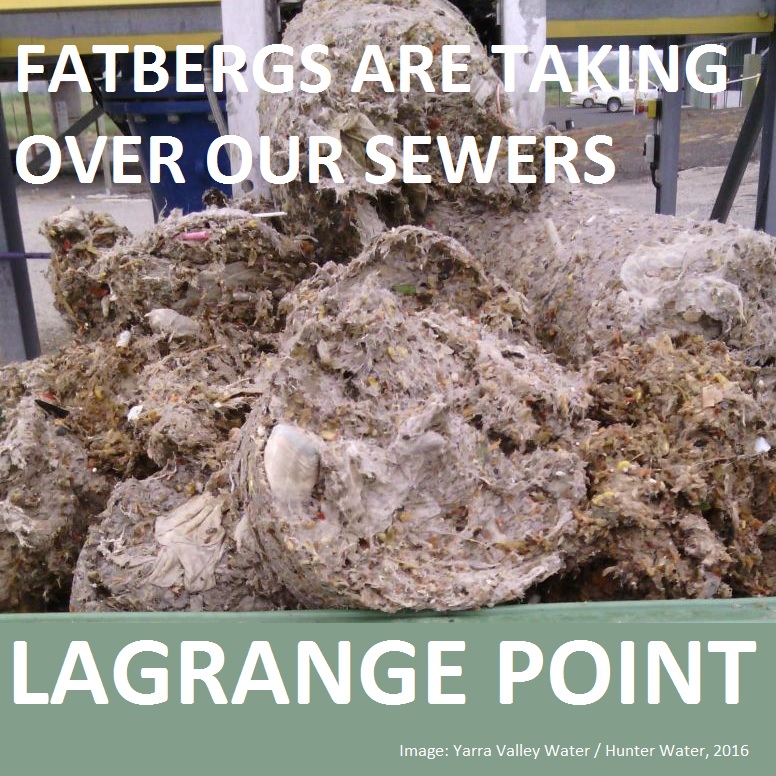
Monday Aug 20, 2018
Monday Aug 20, 2018
Keeping the world clean is a tricky job. You have to fight fatbergs, recycle large amounts of mess and even keep tanks of food clean. Fortunately material scientists keep inventing new methods, and re-applying old ones to help improve our planet. From using old mining techniques to recycle lithium ion batteries, to using oils to keep food equipment clean, plus tacking the monsters of the sewer - fatbergs.
REFERENCES
- Ruiting Zhan, Zachary Oldenburg, Lei Pan. Recovery of active cathode materials from lithium-ion batteries using froth flotation. Sustainable Materials and Technologies, 2018; 17: e00062 DOI: 10.1016/j.susmat.2018.e00062
- Tarek S. Awad, Dalal Asker, Benjamin D. Hatton. Food-Safe Modification of Stainless Steel Food-Processing Surfaces to Reduce Bacterial Biofilms. ACS Applied Materials & Interfaces, 2018; 10 (27): 22902 DOI: 10.1021/acsami.8b03788
- Asha Srinivasan, Moutoshi Saha, Kit Caufield, Otman Abida, Ping Huang Liao, Kwang Victor Lo. Microwave-Enhanced Advanced Oxidation Treatment of Lipids and Food Wastes. Water, Air, & Soil Pollution, 2018; 229 (7) DOI: 10.1007/s11270-018-3894-y
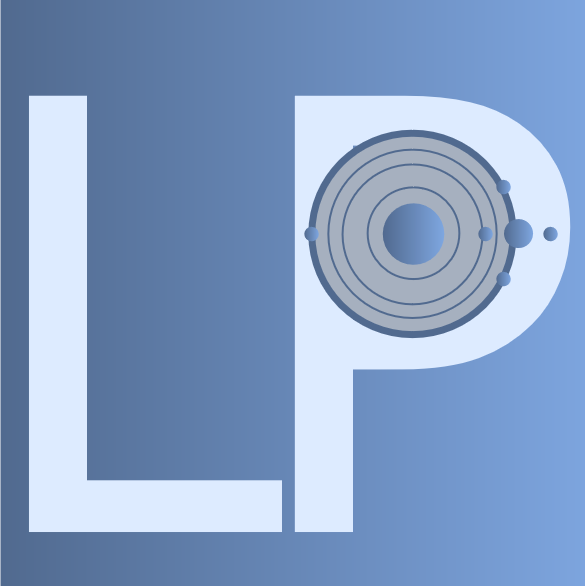
Monday Aug 06, 2018
Monday Aug 06, 2018
The Fields Medals for 2018 have been announced, and Australian Mathematician, Professor Akshay Venkatesh was announced as one of the four recipients. Mathematics can seem like a group of different and diverse subjects, but Professor Venkatesh's work tied different areas of mathematics together to use one toolkit to solve problems in another area. We dive deep into the complex world of mathematics and look at the Fields Medals 2018.
References:
- Slezak, M. (2018). This Aussie genius has won the 'Nobel Prize of mathematics'. [online] ABC News. Available at: http://www.abc.net.au/news/2018-08-02/fields-medal-aussie-genius-akshay-venkatesh-mathematics-prize/10062218 [Accessed 4 Aug. 2018].
- Jackson, A. (2018). [online] Mathunion.org. Available at: https://www.mathunion.org/fileadmin/IMU/Prizes/Fields/2018/venkatesh-final.pdf [Accessed 4 Aug. 2018].

Monday Jul 23, 2018
Monday Jul 23, 2018
Solar Panels keep getting better, but what if we could have solar power even when it's very overcast? Plus is there a way to make concrete greener and less carbon intensive? What if one of those solutions also helped take care of waste product from Coal Power Plants? We look at innovative green technologies this week in Lagrange Point.
- Joshua Shank, Emil A. Kadlec, Robert L. Jarecki, Andrew Starbuck, Stephen Howell, David W. Peters, Paul S. Davids. Power Generation from a Radiative Thermal Source Using a Large-Area Infrared Rectenna. Physical Review Applied, 2018; 9 (5) DOI: 10.1103/PhysRevApplied.9.054040
- Sarvesh Kumar Srivastava, Przemyslaw Piwek, Sonal R. Ayakar, Arman Bonakdarpour, David P. Wilkinson, Vikramaditya G. Yadav. A Biogenic Photovoltaic Material. Small, 2018; 14 (26): 1800729 DOI: 10.1002/smll.201800729
- Gang Xu, Jing Zhong, Xianming Shi. Influence of graphene oxide in a chemically activated fly ash. Fuel, 2018; 226: 644 DOI: 10.1016/j.fuel.2018.04.033
- Sung Hoon Hwang, Rouzbeh Shahsavari. High calcium cementless fly ash binder with low environmental footprint: Optimum Taguchi design. Journal of the American Ceramic Society, 2018; DOI: 10.1111/jace.15873
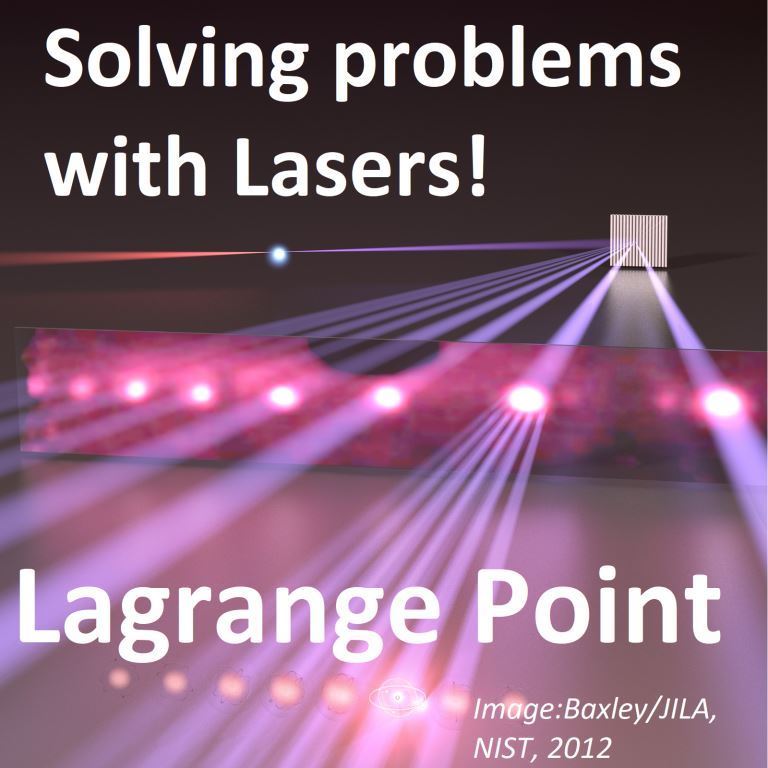
Monday Jun 11, 2018
Episode 278 - Lasers combs for wifi and detecting smells
Monday Jun 11, 2018
Monday Jun 11, 2018
Everyone loves lasers! From science fiction to the military and even scientists in labs. This week we look at using lasers to solve some unusual problems. From something deceptively simple as how to describe a smell to the complexities of better data transmission over WiFi.
- Sarah K. Scholten, Christopher Perrella, James D. Anstie, Richard T. White, Waddah Al-Ashwal, Nicolas Bourbeau Hébert, Jérôme Genest, Andre N. Luiten. Number-Density Measurements of CO2 in Real Time with an Optical Frequency Comb for High Accuracy and Precision. Physical Review Applied, 2018; 9 (5) DOI: 10.1103/PhysRevApplied.9.054043
- Marco Piccardo, Dmitry Kazakov, Noah A. Rubin, Paul Chevalier, Yongrui Wang, Feng Xie, Kevin Lascola, Alexey Belyanin, Federico Capasso. Time-dependent population inversion gratings in laser frequency combs. Optica, 2018; 5 (4): 475 DOI: 10.1364/OPTICA.5.000475
- Image: Extreme ultraviolet (EUV) frequency comb, : Baxley/JILA, 2012, www.nist.gov/pml/div689/euv_comb.cfm

Tuesday Apr 03, 2018
Episode 268 - Farewell Tiangong 1, space stations and managing space debris
Tuesday Apr 03, 2018
Tuesday Apr 03, 2018
We say farewell to Tiangong-1 ("Heavenly place 1"), China's first foray into space stations as it comes crashing to earth and we look forward into the future for space station development. We also find out how scientists across the world plan to tackle the problem of space junk and keep space safe for years to come
